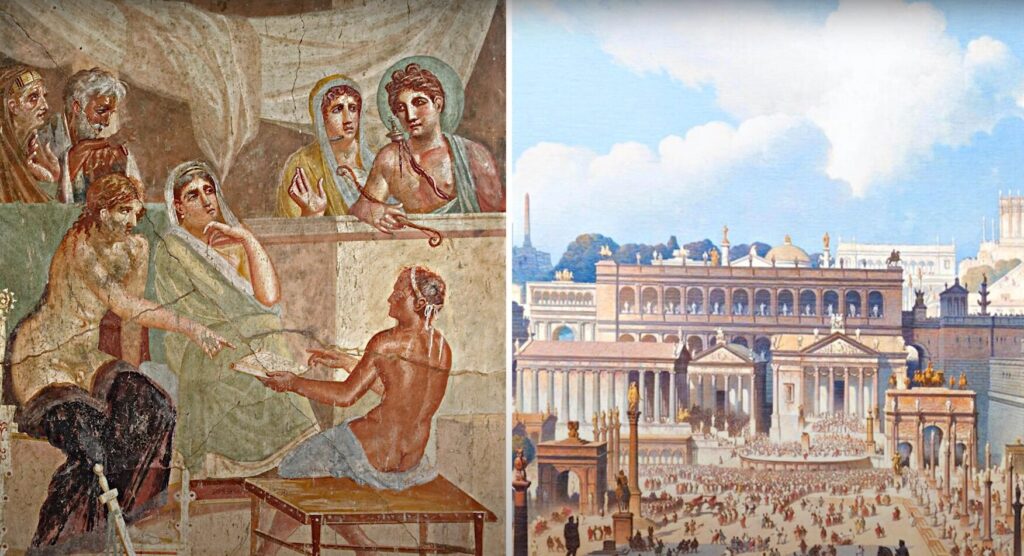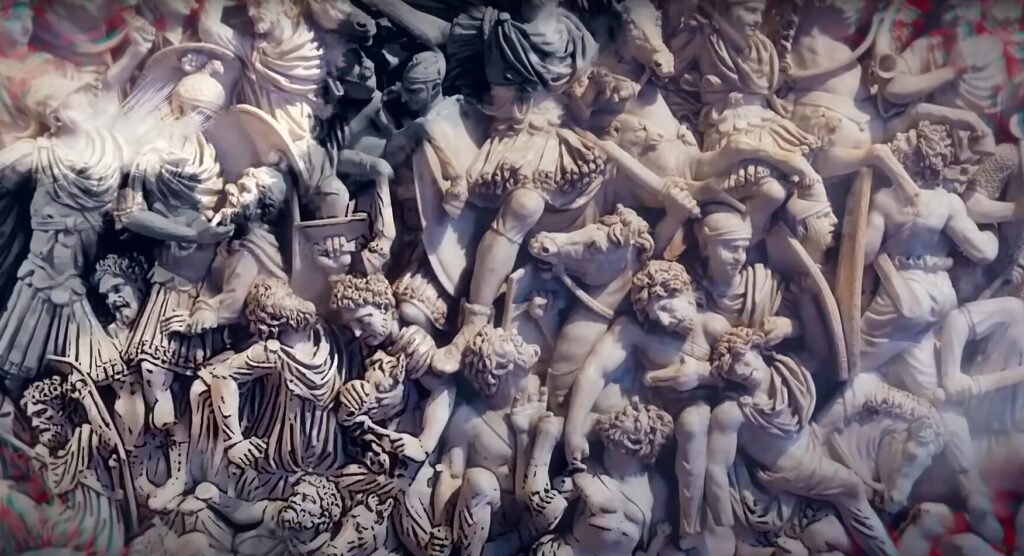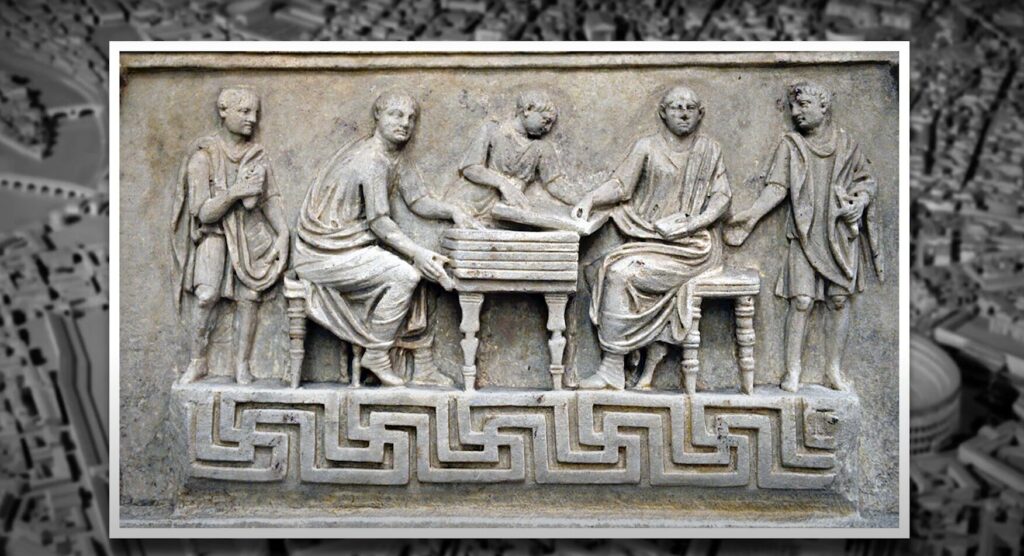In ancient Rome, the movement of news and information played a crucial role in shaping society. When a senator named Catiline plotted against the government, it was the effective spread of rumors and public speeches that alerted many to the threat. People in Rome heard about important events quickly, thanks to informal networks of gossip, public speeches, and even early forms of newspapers. Most Romans got their news by listening at public gatherings, since few could read.
The state made efforts to keep everyone informed. Officials created a daily gazette that included facts about daily life, court cases, and events about the ruling family. Copies of this gazette ended up in public spaces and were read out loud for those who could not read. News also travelled to far-off parts of the empire through merchants and couriers, showing just how important information was to both city life and the wider Roman world.
Key Takeaways
- News spread fast through both rumor and official reports in ancient Rome.
- Most people got their information by listening, not reading.
- The Roman news system influenced how information is shared today.
The Plot Against Rome and Catiline
Cicero’s Actions and Senate Accusations
Cicero learned from rumors that Catiline, a Roman senator, was planning to take over the government. He responded by speaking out during a Senate meeting. Cicero accused Catiline of starting a rebellion, choosing to make his warning public so that as many people as possible would hear it. He hoped that spreading the news quickly would stop the plot before it grew worse.
Cicero’s strategy included using Rome’s many messengers, gossip networks, and the city’s habit of sharing news in busy neighborhoods. After Catiline fled, Cicero went on to address the public again to calm fears and stop wild rumors from spreading even further.
Summary Table: Cicero’s Moves
| Step | Purpose |
|---|---|
| Public Accusation | Expose Catiline’s plot in the Senate |
| Use of Gossip | Allow rumors to help spread the news |
| Address to Citizens | Calm fears after Catiline’s escape |
Effects on the People and City Life
News about the plot moved quickly through Rome. Most people lived in crowded areas, which helped information spread fast, especially when danger was involved. People talked about what happened in the forum, on the streets, and in their homes.
Since many Romans could not read, much information was shared by listening at events or from street criers. Reports of Catiline’s plot and Cicero’s speeches reached nearly everyone, whether by official notice, public address, or word of mouth. The city responded as a group, with crowds reacting openly to what they learned and sharing opinions about the events.
How News Reached Romans:
- Public speeches in the forum and Senate
- Street criers announcing the latest events
- Informal gossip in neighborhoods
- Notices posted in busy locations
The effect was clear: news could unite citizens quickly or stir unrest, depending on what was being shared and how people responded.
How Information Traveled in Ancient Rome

Influence of Whispered Stories and Watchful Citizens
Rumors, gossip, and the work of informers played a major role in how Romans heard news. People often picked up important facts from casual talk in their neighborhoods or from those keeping an ear out for possible trouble. Sometimes, these whispers reached all corners of the city faster than any official statement.
Key Points:
- Word-of-mouth was a primary way for news to move.
- Some individuals made it their job to gather and share information.
- Major events often sparked a wave of rapid gossip.
Gatherings: Festivals, Meetings, and Games
Public events were important sources of news. During assemblies, religious festivals, and games at large stadiums, officials announced victories, important decrees, and other matters. This allowed even those who could not read to stay informed.
In these gatherings:
- Heralds spoke to the crowds.
- People sometimes responded or even argued with those making announcements.
- News shared here helped shape public opinion and community response.
Wall Writings and Street News
Graffiti and written notices were common tools for spreading important updates. Candidates for public office would post their campaigns on walls. Since only a small part of the population could read, criers would walk the streets proclaiming headlines and updates from the latest bulletins.
Examples include:
- Wall writings about political campaigns.
- Street criers sharing official gazette news.
- Notices posted for public view in busy areas.
| Method | Who Used It | Content Shared |
|---|---|---|
| Graffiti | Candidates | Political advertising |
| Street Announcer | Town criers | Official news, events |
| Notice Boards | General public | Gazette-style information |
The Central Marketplace of Conversation

The Roman Forum acted as the heartbeat of news exchange. Lawyers, politicians, and citizens debated and discussed daily events here. Professional rumor-spreaders waited to pick up and pass along talk. The constant activity and conversations in the Forum meant news spread quickly, especially during emergencies or times of unrest.
The Forum provided:
- An open space for announcements and heated debates.
- Direct access to the city’s most vocal figures.
- A network where news traveled almost instantly from person to person.
The Acta Diurna: Rome’s Daily News Sheet
Layout and Topics in the News Sheet
The daily Roman news sheet began with facts like the number of births and deaths reported that day. It included short summaries of big court cases and major decisions made by the senate.
Detailed reports about the emperor and his family got special attention, even if they were not in Rome. Updates on construction work and military news, such as battles and victories, were also featured.
A typical issue might include a table like this:
| Section | Example Content |
|---|---|
| Births & Deaths | Daily statistics |
| Legal News | Major trials, senate decisions |
| Imperial News | Updates on emperor and family |
| Military News | Reports on wars, victories, skirmishes |
| Building Works | Progress on public projects |
Stories About Everyday Life
Readers often looked forward to real-life stories and strange events. This section reported eye-catching tales, such as a loyal dog staying with its dead owner, a fight at a funeral, or an architect fixing a slanted building.
There could also be reports like:
- The punishment of a slave
- A big fire in the city
- A messy breakup between a couple
These stories made the news sheet interesting for everyday people, not just those in government or business.
How the News Sheet Was Made and Spread
Minor officials and note-takers wrote the news sheet. Reporters took shorthand notes at trials and searched the city for news tips.
Only a small number of copies were made. Some went to libraries and archives, while others were posted on boards for public reading.
Because few people could read, criers—people who read the news aloud—shared the latest news in busy places. Scribes, sometimes slaves, copied the news for wealthy families. Merchants and couriers took copies to the provinces and border armies, making sure the news traveled far beyond Rome itself.
The delivery system looked something like this:
- Written by officials and reporters
- Posted in public places and libraries
- Read aloud by criers in the streets
- Copied by scribes for the rich
- Delivered to provinces by travelers and merchants
How Reading Skills Affected How Romans Got Their News
Sharing News by Listening and Speaking
Most people in Rome could not read or write. They usually heard news spoken aloud in public places. At events like assemblies or games, official messengers or leaders announced important news. These announcements included victories, court rulings, and gifts of food from the government.
The crowd often responded right away, sometimes even joking back with the speaker. Rumors and gossip also moved quickly through busy neighborhoods, passing from person to person. The central meeting area, or forum, was a main spot where lawyers and politicians spoke loudly to reach larger groups. Professional rumor-spreaders added to the chatter, making sure that word about major events spread fast.
News written on walls as graffiti helped during elections or other public matters, but because few people could read, most still relied on public speech and conversations.
Scribes and Reading Among the Wealthy
The daily gazette was a main source of written news, but printed copies were limited. Most people did not read it themselves. Instead, street criers, known for their loud voices, read these postings so everyone nearby could hear the news.
Wealthy families often owned educated slaves who acted as scribes. These scribes would quickly copy the gazette and send the news to their masters. Wealthy Romans living far from the city used merchants and messengers to bring news from Rome to the provinces.
Scribes and couriers helped the elite stay informed. But for almost everyone else, the spoken word was the main way to hear the latest events.
Table: Ways Romans Received News
| Method | Who Used It | Literacy Needed |
|---|---|---|
| Public speeches | General population | No |
| Rumors/gossip | Everyone | No |
| Street crier readings | City dwellers | No |
| Daily gazette (written) | Scholars, rich | Yes |
| Scribed copies to elite | Wealthy households | No (listener), Yes (reader) |
Note: Most Romans got news by listening, not by reading it themselves.
The Gazette Across the Empire

News Beyond the City
The daily gazette was not meant only for Rome’s residents. News and updates traveled far past the city, reaching distant towns and settlements.
Copies of the gazette made their way to public reading spots in major cities. A few were archived in libraries for later study by researchers and officials. Many parts of the empire looked to Rome for important news, and the gazette was key in keeping everyone informed.
Traders, Messengers, and Soldiers
Scribes, often working for wealthy families, copied the gazette and sent updates to those outside Rome. Merchants moving between cities and professional messengers helped carry this news to the provinces.
Soldiers serving on the empire’s borders also received news from the capital. Official couriers brought copies to army camps, ensuring that even those far from home stayed updated with events, legal decisions, and stories from Rome. This network let important news reach people no matter where they lived within Roman lands.
Legacy of Roman News Methods
Roman news methods shaped how information spread, using both official and informal channels. Dense neighborhoods and strong social ties meant news traveled quickly through word of mouth, gossip, and public speeches. Even a rumor could pass through the city like wildfire.
Ways Romans Shared News:
- Public addresses: Leaders spoke to crowds during assemblies, festivals, and games.
- Graffiti: Candidates and news were often advertised on city walls.
- Rumor and gossip: Informal networks connected all corners of the city.
- The Forum: Professionals and citizens exchanged the latest updates in person.
- Public notice boards: Key news was displayed for all to see.
The Acta Diurna, Rome’s daily gazette, stands out as an early form of the newspaper. It included statistics on births and deaths, court news, Senate decisions, imperial family updates, and even odd local stories. The production was handled by officials and notaries who collected and reported stories from the courts and forums.
The table below shows how news circulated in Rome:
| Method | Key Features |
|---|---|
| Spoken Announcements | Spoke to large crowds, spread news directly |
| Graffiti | Political and social messages on city walls |
| The Acta Diurna | Daily written reports posted in public places |
| Street Criers | Read news aloud for those who could not read |
| Personal Letters | Scribes copied news for the elite and provinces |
Street criers and copied reports helped inform people who could not read. News also spread to distant parts of the empire by merchants, scribes, and couriers. Even in far-off provinces, people awaited news from Rome’s center.
Roman news culture showed that information could move fast and reach broad audiences, even long before modern technology.
